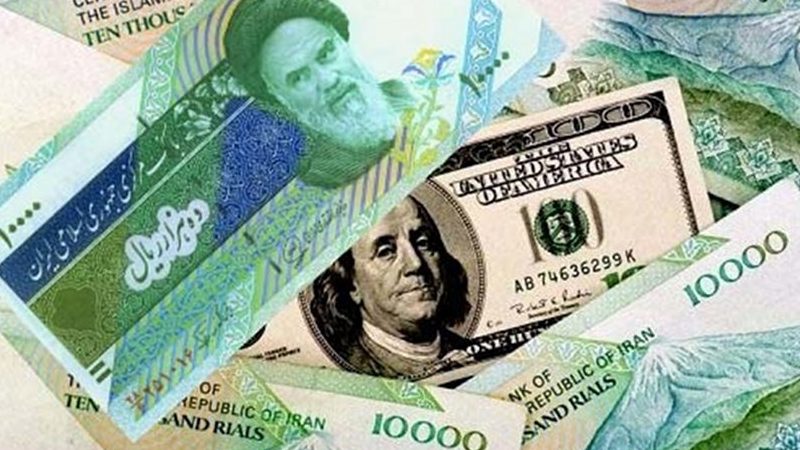At a time when Iran’s economy has buckled under the weight of inflation and global isolation, economist Mahmoud Jamsaz in an article published in the state-run Bahar News website on April 1, cautiously criticized the structure of the country’s political economy. He discussed the role of inflation and the regime’s expansionist policies in the collapse of the national currency’s value.
However, like many in-system commentaries, his analysis remains veiled in ambiguity and self-censorship, hiding the main root of this catastrophe: the system led by the regime Supreme Leader Ali Khamenei and his inner circle, through the systematic plundering of the nation’s resources and destructive policies, has driven Iran into poverty and misery.
Inflation, which Jamsaz describes as the enemy of predictability and investment, is not merely an economic phenomenon in Iran but a weapon wielded by the regime to loot the people. Over the past 45 years, the value of the national currency has plummeted by 99.99%, sinking to the bottom of global currency rankings.
A single unit of currency from 1979 is now worth a mere fraction of 1/10,675 of its former value. This collapse, which has driven general price levels up by more than 10,600 times, is the direct result of the regime’s policies: unrestrained money printing, massive budget deficits, and the distribution of enormous rents to preserve its survival. Without knowing the identity of their plunderers, the people lose their wealth with every turn of the inflationary wheel. The middle class, once the backbone of society, has now slid into poverty. This is not a mere case of incompetence but an organized plunder orchestrated by Khamenei’s inner circle and affiliated institutions, funneling the nation’s wealth into the pockets of military commanders and privileged elites.
The economist describes taxes and inflation as the two blades of scissors that have cut off society’s financial power. However, what he does not mention is that these tools are not used for national interest but to sustain a corrupt ideological system. Taxes extracted from the people, instead of being invested in infrastructure development, are spent on repression, the production of weapons of mass destruction, warmongering propaganda, and foreign projects that solely serve the survival of the regime. Meanwhile, inflation, as a hidden tax, has institutionalized poverty and turned public trust to ashes. This vicious cycle, which Jamsaz avoids exposing its masterminds, directly stems from the decisions made by Khamenei’s inner circle and the state-run system, which has sacrificed the economy at the altar of religious fascism.
The intertwining of ideology and politics, which Jamsaz mentions, is in fact the very fabric of the mullahs’ regime. This doctrine, rooted in repression, warmongering, and military expansion, has not only sidelined the private sector but also taken the economy hostage through dependence on oil revenues and the Dutch disease.
The exorbitant costs of deceptive propaganda, the institutionalized corruption within the Islamic Revolutionary Guard Corps (IRGC) and governmental bodies, and the squandering of foreign currency reserves on fruitless projects all stem from policies insisted upon by Khamenei and his inner circle. This system, focused on its own survival rather than national development, has destroyed vital infrastructure and enslaved the people to serve its own goals.
Jamsaz considers sanctions a factor in exacerbating inflation and the rise of the dollar, but he overlooks that this isolation is the direct result of the regime’s aggressive and adventurous policies. The export of terrorism and efforts to expand strategic depth, which have devoured hundreds of billions of dollars from the national treasury, have plunged Iran into misery and decline. The 1,000,000 rials per US dollar rate reflects not only inflation but also the grand decisions of Khamenei’s inner circle. The unofficial currency market, speculation, and capital flight all stem from distrust in the rial, which has been destroyed under the rule of a corrupt and unaccountable regime.
Jamsaz warns that inflation could undermine the foundations of the regime, referring to historical examples like the fall of Rome, Louis XVI, the Weimar Republic, and Robert Mugabe. However, within his cautious framework, he stops short of revealing the truth: that the mullahs’ regime itself is the cause of this catastrophe, not its victim.
Inflation in Iran is not merely a warning bell the regime can ignore — it is the death knell that has already begun tolling for this regime. In Germany, people pushing wheelbarrows of money in search of bread paved the way for Hitler. But in Iran, this simmering anger will not lead to another dictatorship; it will bring about the complete overthrow of this system
The regime, faced with increasing global pressures, has found itself in a historic impasse. The historic collapse of the national currency’s value is not merely an economic crisis but a mirror reflecting the corruption, despotism, and inefficiency of the ruling regime. This disaster, which has brought poverty to every Iranian household and stolen trust from society, is the result of deliberate decisions by Khamenei’s inner circle and affiliated institutions that have taken the nation hostage. The way out lies not in fruitless negotiations or temporary policies, but in the overthrow of this regime. Only with the end of this despotism can Iran’s economy be freed from turmoil, investments return, and the national currency regain its value. The future that awaits will not be shaped by compromise but by revolution — a revolution that will consign the plunderers to the dustbin of history and bring forth the spring of freedom.



